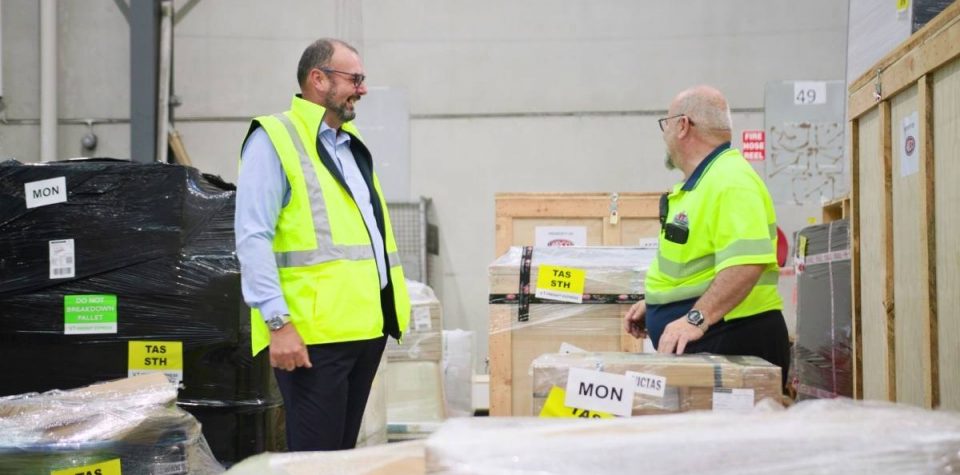Table of Contents:
- The Challenges of Old Systems.
- The Benefits of Modern Logistics Software
- Strategies for Merging Legacy Systems with Modern Logistics Software
- Out With The Old, In With The New
Find out how to seamlessly connect your outdated logistics management apparatus with the most up-to-date software systems.
Nothing stays the same for long in the world of logistics. This is especially true of the software systems now available to make your business operate smoothly and profitably. These days, technology plays a pivotal role in ensuring both efficiency and competitiveness.
However, many Australian logistics operators have a legacy of systems and processes that have served them well in the past but are now showing signs of strain in the face of rapid industry changes. The solution lies in seamlessly merging these legacy systems with modern logistics software to unlock new levels of productivity and adaptability.
In this blog post, we will explore the challenges faced by Australian logistics companies that still rely on legacy systems, the benefits of transitioning to modern logistics software, and practical strategies for making this transformation while preserving your valuable legacy systems.
The Challenges of Old Systems.
Before delving into the integration process, let’s first understand the challenges that many Australian logistics operators encounter due to their reliance on legacy systems.
Inefficiency
Bits of paper, old invoice books, sheaves of dispatch dockets splattered with coffee and thumbprints. Legacy systems are often fragmented and lack the integration capabilities of modern software. This can lead to inefficiencies in data management, communication, and decision-making.
Competition
The logistics industry in Australia (and around the world) is becoming increasingly competitive. To stay ahead, your logistics business needs the agility and speed offered by modern software solutions to stay ahead of the pack.
Customer expectations
Customers now expect real-time tracking, transparency, and efficient services. Legacy systems, which often rely on phone calls, fax machines and snail mail, may struggle to meet these demands.
Regulatory compliance
It’s a brave new world out there. Red tape is everywhere and compliance requirements are constantly evolving. Adapting legacy systems to meet these new regulations, and keep up with the changes, can be time-consuming and costly.
Scalability
As your business grows, legacy systems may struggle to scale up to keep up with your increasing flow of clients and to meet the demands of a larger operation.
The Benefits of Modern Logistics Software
Your trusty old legacy system may have served you well for years. But by transitioning to modern logistics software, you’ll be able to easily address the challenges of modern-day logistics and ensure that your business functions according to 21st-century needs.
Enhanced efficiency
Modern logistics software will streamline your operations. It can automate almost all of the processes you and your staff have done by hand until now. And, best of all, it will give you real-time visibility into your supply chains, from end to end.
Improved customer service
With better tracking and communication capabilities, you’ll be able to provide your customers with real-time updates about the progress of their delivery. This can be a game-changer for logistics companies because, let’s face it, customers like to know from hour to hour where their goods are. So if you can provide them with accurate and up-to-the-minute updates, you’ll meet their expectations more effectively.
Scalability
Modern software is designed to scale with your business, ensuring you can adapt to changing demands without significant disruptions. No more buying a job lot of invoice books to stash in the back room. Your new logistics software runs on the space taken up by a computer and a smartphone.
Data analytics
Logistics software will give you access to a universe of advanced analytics systems that can help you make data-driven decisions and optimise your logistics processes.
Compliance
Modern software often includes compliance features that help you stay up-to-date with regulatory requirements without excessive manual effort.
Strategies for Merging Legacy Systems with Modern Logistics Software
OK. Now that we’ve established the benefits of logistics software, let’s explore practical strategies for merging your legacy systems with modern logistics software. As always, having a good plan can mean the difference between an easy transition or a whole raft of problems.
Assessment and planning
Begin by conducting a thorough assessment of your existing systems and identifying their strengths and weaknesses. Develop a clear plan for integration, including timelines, objectives, and key performance indicators (KPIs).
Choose the right software for your situation
Select a modern logistics software solution that aligns with your specific needs and integrates well with your legacy systems. Ensure that it offers scalability and customization options.
Data migration
Invest in a robust data migration strategy. Cleanse and consolidate data from legacy systems before migrating it to the new software. Ensure the accuracy and security of your data during this process.
Integration middleware
Implement middleware solutions or application programming interfaces (APIs) to facilitate seamless communication between your legacy systems and modern software. This middleware acts as a bridge, allowing data to flow between systems.
User training and change management
It can be daunting for some people to learn new systems, especially if they are comfortable and familiar with older ways of doing things. So it is a good idea to prepare your team for the transition by providing comprehensive training on the new software. Address any resistance to change through effective change management strategies.
Phased implementation
Consider a phased approach to minimise disruptions. Start with less critical processes and gradually transition to core functions. Monitor progress and make adjustments as needed.
Data Backup and Recovery
Ensure robust data backup strategy and recovery mechanisms are in place to safeguard against any unforeseen issues during the integration process. Keep those old paper copies for a while yet!
Testing and quality assurance
Rigorously test the integrated systems to identify and rectify any issues before going live. This will help prevent operational disruptions which will frustrate your staff and possibly lead to customer dissatisfaction.
Continuous post-implementation monitoring and optimisation
Once your new systems are up and running, you’ll need to constantly monitor the performance of your sleek and shiny integrated systems and continuously seek opportunities for optimisation and improvement.
Gather a team of experts
If your logistics operation is particularly complex or you lack in-house expertise, consider partnering with logistics software integration experts who can guide you through the process.
Out With The Old, In With The New
Merging legacy systems with modern logistics software is not just a technological upgrade. It’s also a strategic move to remain competitive and agile in the Australian logistics industry. While the transition may pose challenges, the benefits in terms of efficiency, customer service, scalability, and compliance are well worth the effort.
By following a well-planned integration strategy and embracing the right technology, Australian logistics operators can future-proof their operations and thrive in an increasingly digital world.
So if you are ready to make the jump from the slow paper trail to software light speed, get in touch with our team. They can give you advice about setting things in motion as you merge your legacy systems with brand-new software.



